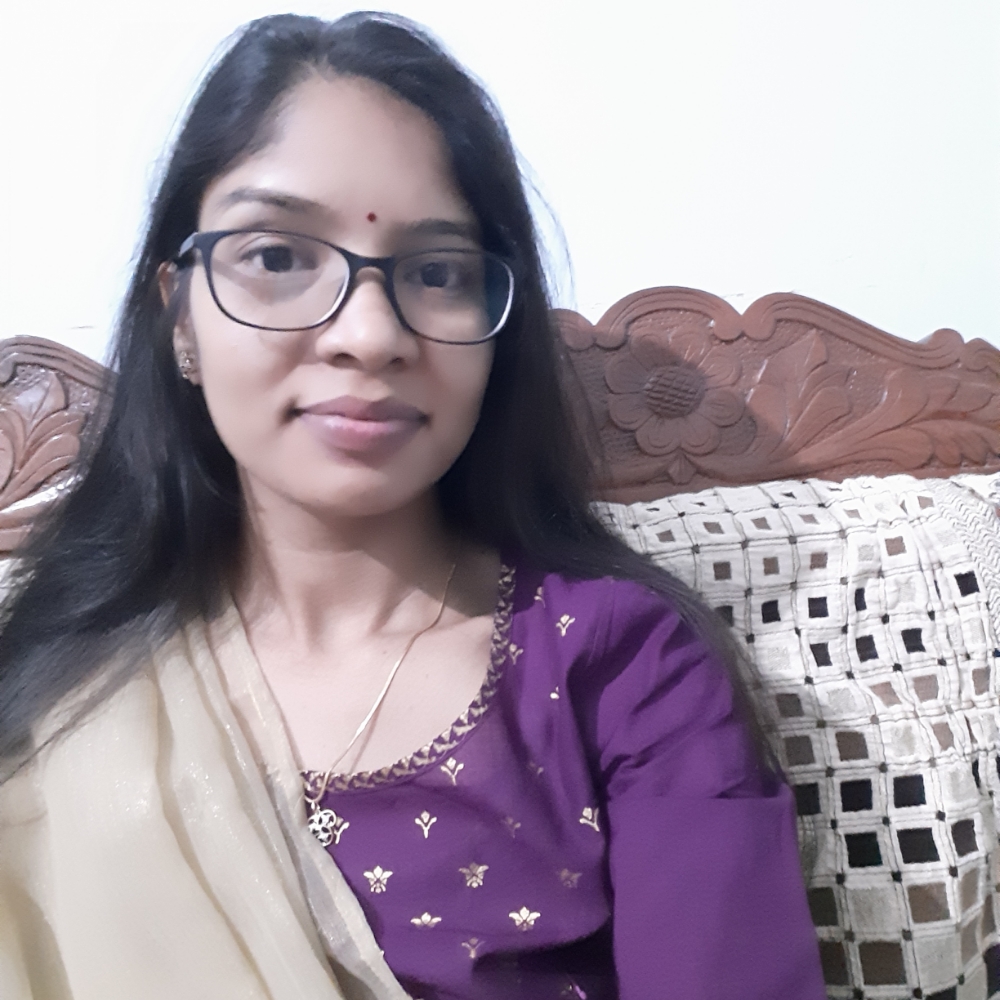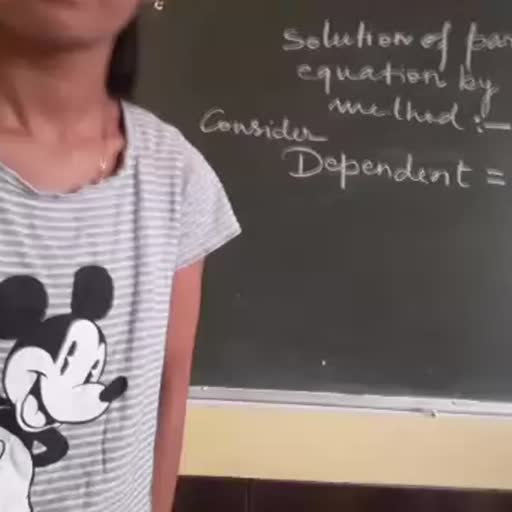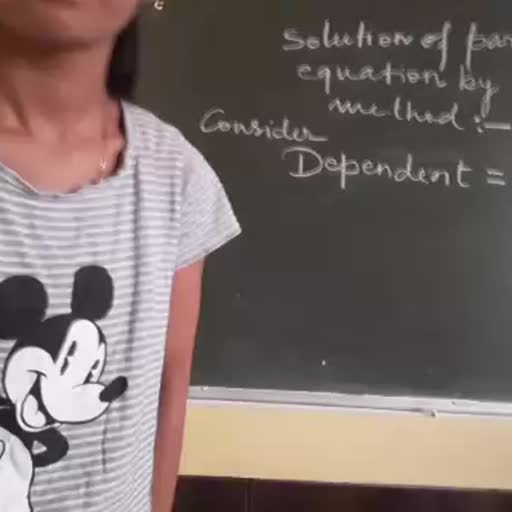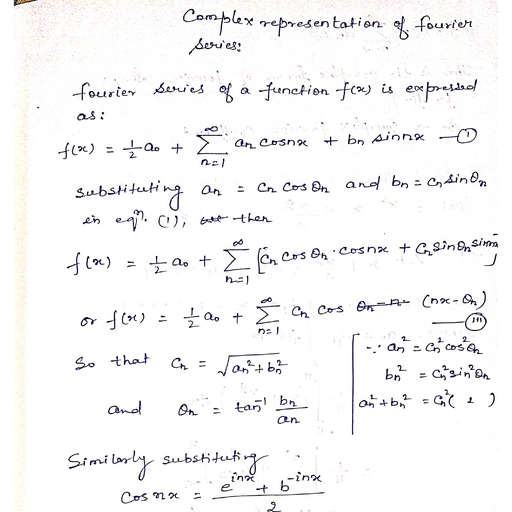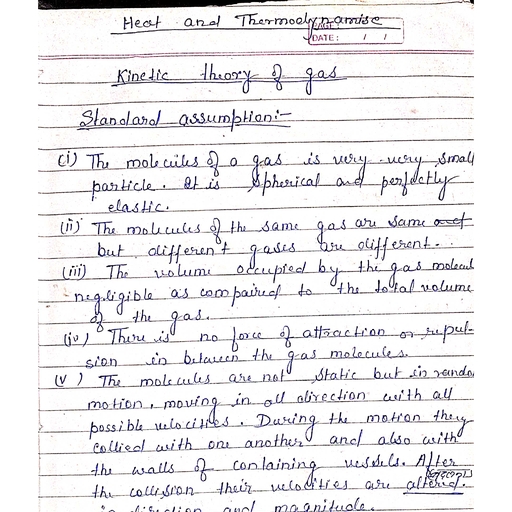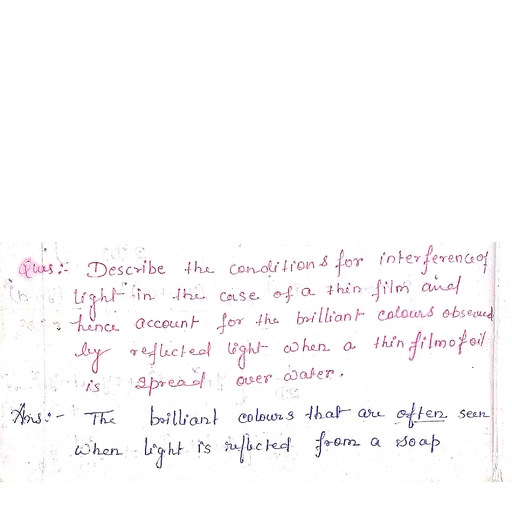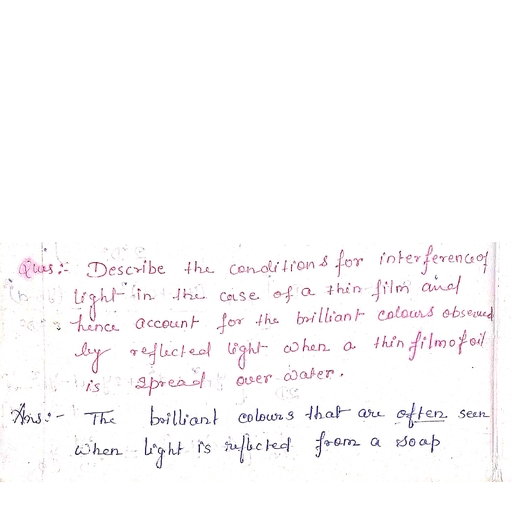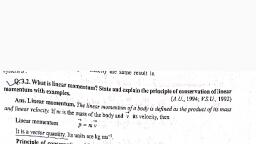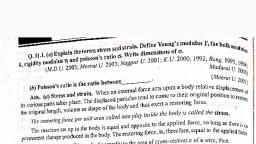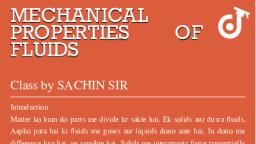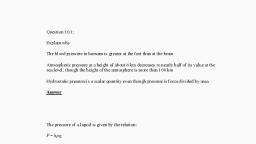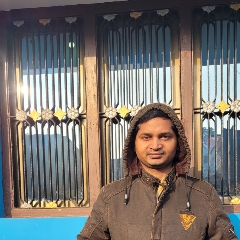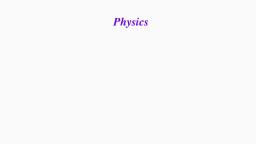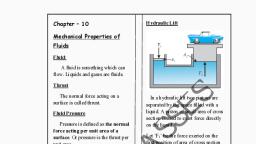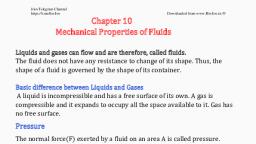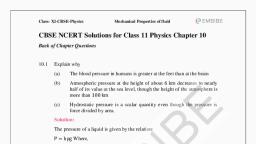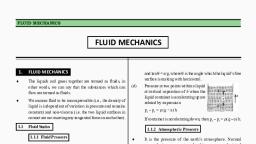Page 1 :
v7 \| Ap, , pETERMINATIONS OF SURFACE TENSION, ip by Jaeger’s Method, Jaeger’s method of determination of surface tension of a liquid is based, , ‘ne principle of formation of bubble due to exce 8 api, ie C is partially dipped in water where the nozzle of ihe tube fs it i oe, gom the free surface of the liquid (water). M is a manometer used to measure, ressure difference. The capillary tube is connected to the manometer. W, isa pottle with two air tight corks, It is commonly known as Wolf’s bottle, water is poured slowly into the funnel so that air inside the bottle is, compressed and excess pressure is built up. The manometer records the excess, essure. Now due to the excess pressure, bubble is formed at the nozzle, . inside water. At an optimum value of the pressure difference, the bubble, jreaks off from the tip of the capillary tube. Next another bubbie starts forming, , for which the excess pressure is again recorded in the manometer., , , , Fig. 9. Jaeger’s method to determine surface tension.
Page 2 :
162/114, , The maximum pressure inside, , where P, is the atmosph, manometer. The pressure J, , density of water and, , Sea, , MECHANICS (Sem..) 44,, na, , the bubble is, P; = Pathpg, , x is the depth 0, , Pressure difference = P= P,—-P2, , The bubble is formed inside wate!, _ 27 :, Hence, the excess pressure IS ~~ where T is the surface tension of water,, , Hence from equation (26), , In fact the radius of the, , orifice. Assuming that r is a, is basically used to compare sur, , (ii) by Quincke’s Method, , method is used to mea, does not stick to the so, , Quincke’s, which in gencral, drop on a gl, contact also., , becomes slightly ova, molecules is very ver, mercury and glass mo, the force of surface tension,, contact surface becomes fla, bottom surface is me, on which very small amount o, , by the microscope., , ass plate. Th, When a mercury drop is, , = g(hp - xo), , 2T, , gl(hp-x0) = —, 1, 58 (hp — xo), , |, , ", , T, , e method can, placed on a gl, , | shaped. The force o, , ry strong compare, lecules. When gravita, , asured by, f lycopodium pow, , , , , , , , , , , , , , Fig. 10. Quincke’s method, , d to the force of adhesion, tional force becomes, , eric pressure and p is density of the liquid ;, ‘ust outside the bubble is P2 = Pa + xc, He the, f the tip from the free surface ci Wane is, , a (26), , r. So it will have only one surface, , Q), , bubble is not exactly equal to the radius of the, function of the radius of the orifice, the method, face tension of liquid at different temperatures., , sure the Surface tension of a liquid, lid surface. Best example is mercury |, be used to measure the angle of, ass plate, the drop, , f cohesion among the mercury, , among the, larger than, , glass plate, he, , the mercury drop placed on a, t. The difference between top surface an!, a microscope. The upper su, der is sprink, , rface of the dP, led, is focussed
Page 3 :
TENSION AND FLUID MOTION 163/115, , , , guRFACE, , The convex side of the mercury drop has maximum elevation at a small, egion about the pole O. Hence the horizontal section OABC has the maximum, area. Since the curved surface is bulging out. There is an excess force outward., This force is balanced by the surface tension force. The reason is that the, drop is in equilibrium. The excess force is the product of average pressure, , and area., On the surface of maximum area, the force due to the weight is, , 1, Fw 3 hog x hd, , 1, 2 I’pgd ... (28), , This force will act towards left which is balanced due to the surface, tension. Force due to surface tension is, , , , Fy = Td w (29), In equilibirum, 1, Td= 5 I’pgd, 1 9, T= 3 h-pg . (30), The angle of contact is an obtuse angle for glass-mercury interface., Q@+a = 180°, 6 = 180°-a . BL), In equilibrium, 1, Td+Tdcosa = 5 Hpgd, ! 2, T(1+cosa) = 2 H*pg, H2, l+cosa = PE, 2T, _ H’pgx2, hg x2
Page 4 :
164/116 MECHANICS (Sem.-l) Hons., , co H 1, sa =A, Ie, 6 = 180°-a, , 2, 130° cos7!| Hy 32), he, , Thus by measuring H and A by a microscope, the angle of contact can, be determined.
